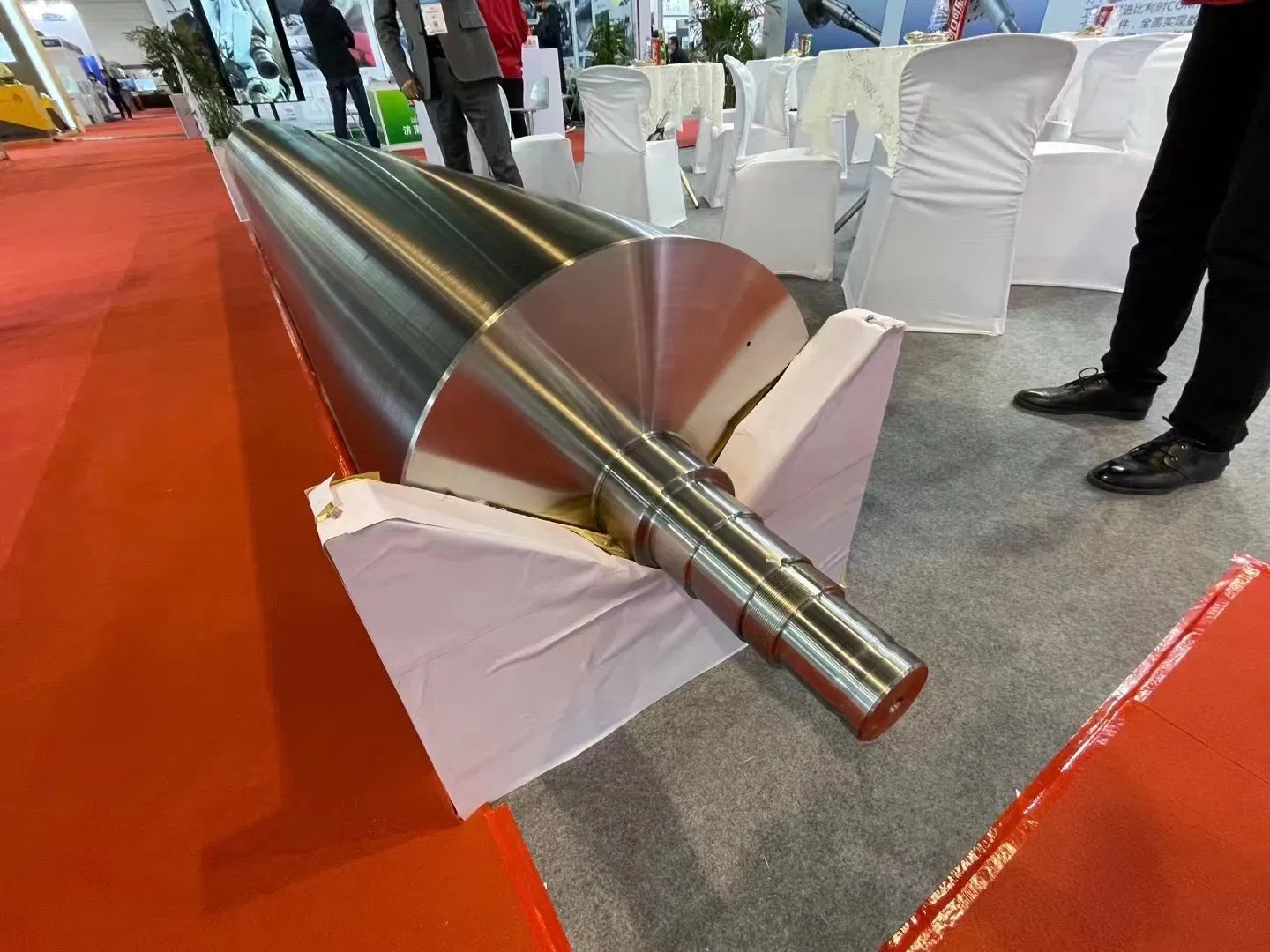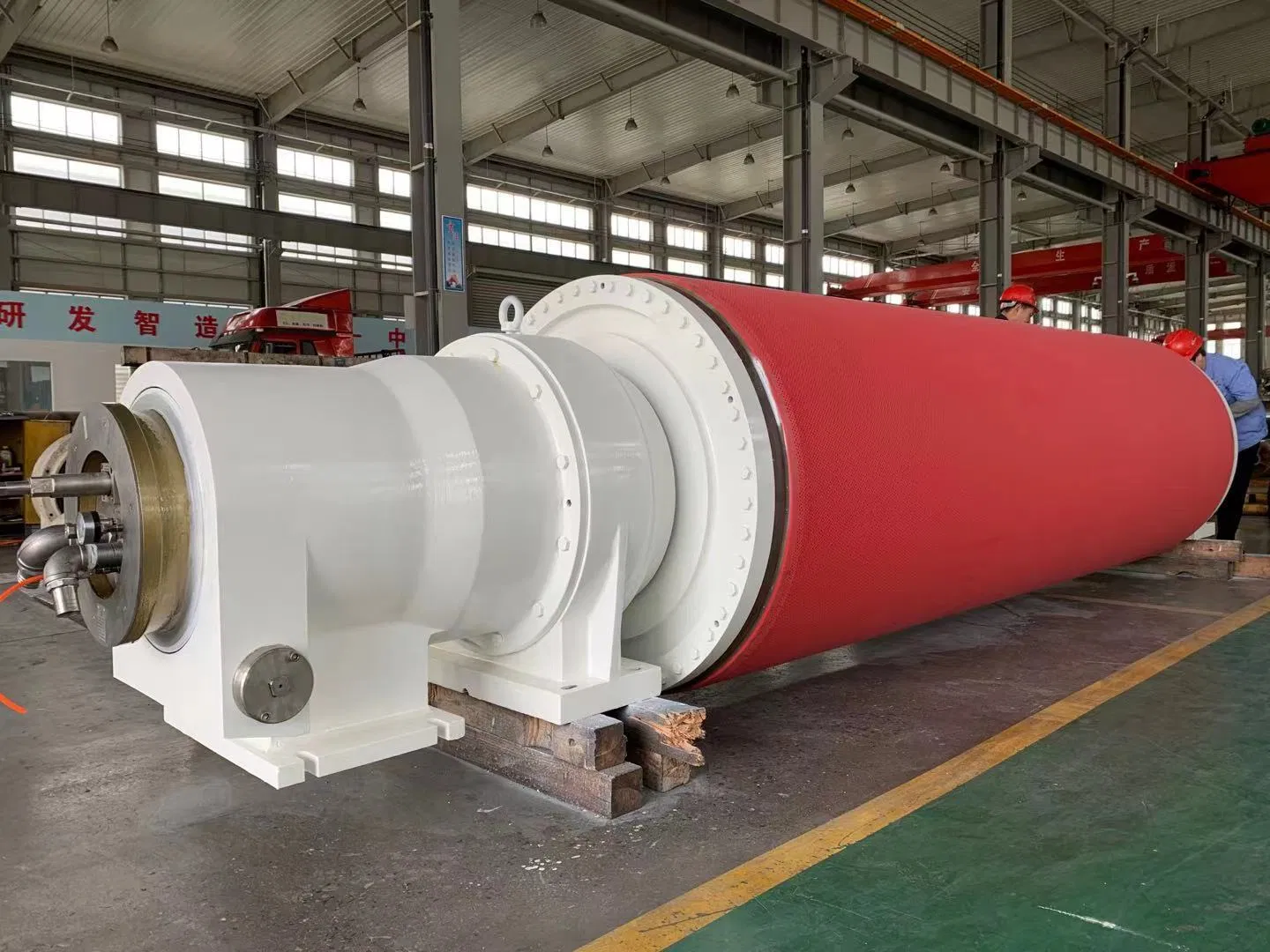In the high-stakes world of industrial manufacturing—whether you're producing paper, plastic film, or nonwoven textiles—every single component on your production line counts. Even the slightest imperfection can lead to costly downtime, product defects, and a hit to your bottom line. Have you ever wondered which components have the most unsung yet critical impact? In my experience, one of the most pivotal is the humble-looking, yet incredibly sophisticated, blind drilled roll.
These rolls are the silent workhorses responsible for controlling air, water, and tension on the web. And frankly speaking, the difference between a standard, off-the-shelf roll and a meticulously engineered one from a specialized Custom Blind Drilled Roll Manufacturer is the difference between just getting by and achieving peak operational excellence. This guide will pull back the curtain on these essential components, exploring what they are, why customization is non-negotiable, and how to select a manufacturing partner that will truly elevate your process.
The Unseen Power of Blind Drilled Rolls: What Are They and Why Do They Matter?
At first glance, a blind drilled roll might look like a simple metal cylinder with a bunch of holes in it. But, as with most things in precision engineering, the devil is in the details. Understanding their function is the first step to appreciating their value.
Defining the Blind Drilled Roll
Let's break down the name. The "drilled" part is obvious—the surface is covered in a pattern of holes. The "blind" part is the crucial distinction. Unlike a through-drilled roll where holes go all the way through the roll shell, a blind drilled hole stops short, creating a small, self-contained pocket. These rolls are often connected to an internal vacuum system. When a web of material (like paper or film) passes over the roll's surface, the vacuum pulls air or liquid from the web into these tiny pockets, effectively "sucking" the web onto the roll's surface.
This creates a number of benefits:
- Dewatering: In papermaking, blind drilled suction rolls are essential for removing water from the paper sheet, a critical step in the drying process.
- Air Entrapment Prevention: When laminating films or applying coatings, trapped air bubbles can cause delamination or surface defects. A blind drilled roll evacuates that air before it becomes a problem.
- Web Stabilization: The suction provides a firm grip on the material, preventing web flutter, wrinkles, and tracking issues at high speeds.
The Science Behind the Performance
It's worth noting that the effectiveness of a blind drilled roll isn't just about suction; it's about fluid dynamics on a micro-scale. The size, depth, angle, and pattern of the holes are all meticulously calculated. The goal is to create just enough vacuum to do the job without damaging the web or consuming excessive energy. A well-designed roll provides a uniform vacuum across its entire face, ensuring consistent dewatering or air removal. This is a far cry from grooved rolls, which can leave lines on the product, or standard perforated rolls, which may lack the structural integrity or performance characteristics for demanding applications.

Key Industries and Applications
The application of precision blind drilled rolls is surprisingly diverse. To be honest, almost any industry that handles a continuous web of material can benefit. Key sectors include:
- Pulp and Paper: Used as suction couch rolls, press rolls, and transfer rolls for efficient water removal and sheet handling.
- Plastic Film & Converting: Essential for cast film lines to prevent air entrapment between the film and the chill roll, ensuring optical clarity and a smooth finish.
- Nonwovens: Used in thermal bonding and hydroentanglement processes to control the web and ensure uniform product characteristics.
- Textiles: Applied in finishing processes where precise moisture control and tension are required.
Beyond Off-the-Shelf: The Critical Need for Customization
You might be tempted to source a "standard" roll to save on initial costs. However, I've found that this is almost always a shortsighted strategy. Every production line has its own unique variables—line speed, material type, web width, environmental conditions—and a one-size-fits-all approach simply doesn't work.
Why Standard Rolls Often Fall Short
A generic roll is designed for a generic process. The problem is, your process isn't generic. Using a standard roll can lead to a host of issues:
- Sub-optimal Performance: The hole pattern or vacuum level might not be aggressive enough, leaving too much water or air in your product. Or, it could be too aggressive, damaging delicate materials.
- Material Incompatibility: The roll's base metal or coating might not be resistant to the specific chemicals used in your process, leading to premature corrosion and failure.
- Poor Longevity: A standard roll may not be designed to handle your specific line speeds and tensions, resulting in faster wear, more frequent regrinding, and costly downtime.
The "Custom" in Custom Blind Drilled Roll Manufacturer
This is where a true specialist shines. A dedicated Custom Blind Drilled Roll Manufacturer doesn't just sell you a product; they engineer a solution. Customization goes far beyond just length and diameter. It involves a holistic look at your application.
Key areas of customization include:
- Material Selection: Choosing the right base metal is foundational. Options range from carbon steel for basic applications to various grades of stainless steel (like 304 or 316) for corrosion resistance, and even specialized alloys or bronze shells for specific needs.
- Drilling Pattern & Density: The layout of the holes is a science in itself. Should it be a standard spiral, a staggered pattern, or something completely unique? The open area (the percentage of the surface that is holes) is precisely calculated to match your dewatering or air removal requirements.
- Hole Geometry: The diameter, depth, and even the angle of the holes are tailored to your material and line speed. Deeper holes can hold more water but may be harder to clean.
- Surface Coatings: To enhance performance and lifespan, various coatings can be applied. Rubber or polyurethane covers can improve grip and nip performance, while ceramic or tungsten carbide coatings provide extreme wear resistance.
- Internal Vacuum Box Design: The internal mechanics that create the suction are just as important as the external shell. The design of the vacuum box, including the seals, can be customized to adjust the vacuum zone for different web widths or process needs.
The Manufacturing Process: A Deep Dive into Precision Engineering
Creating a high-performance blind drilled roll is a multi-stage process that demands state-of-the-art equipment and, more importantly, deep expertise. It’s a blend of heavy metal fabrication and microscopic precision.
From Raw Material to Finished Roll
The journey begins with a carefully selected raw material, often a forged steel or stainless steel shell. The basic manufacturing steps generally include:
- Core Fabrication: The roll body, journals (the ends that sit in the bearings), and internal structures are forged, welded, and rough-machined.
- Stress Relieving: The fabricated roll is heat-treated to relieve internal stresses created during fabrication, ensuring it remains dimensionally stable throughout its life.
- Precision Drilling: This is the most critical stage. Using advanced CNC (Computer Numerical Control) machines, thousands of holes are drilled according to the exact custom pattern.
- Grinding and Finishing: The roll surface is ground to incredibly tight tolerances for both its overall diameter and surface smoothness (Ra). This ensures perfect contact with the web.
- Dynamic Balancing: The roll is spun at high speeds and balanced to eliminate vibration. An unbalanced roll would cause chatter, damage bearings, and negatively impact product quality.
- Final Assembly & Inspection: Any covers are applied, internal vacuum components are installed, and the entire assembly undergoes a rigorous final quality control check.

The Art and Science of Industrial Roll Drilling Services
The drilling process itself is a marvel of modern manufacturing. High-speed drills, guided by computer programs, create each hole with repeatable accuracy. The manufacturer must control for drill wear, chip removal, and heat to ensure every single hole meets the specification. Any deviation can create a "dead spot" on the roll with no suction, leading to a defect in the final product. This is a core competency that separates elite providers of industrial roll drilling services from the rest.
Quality Control: The Non-Negotiable Factor
Many experts agree that a manufacturer is only as good as its quality control department. For a custom blind drilled roll, this is paramount. Key QC checks include:
- Dimensional Verification: Using laser trackers or CMMs (Coordinate-Measuring Machines) to ensure all dimensions, from the overall length to the journal diameters, are within tolerance.
- Surface Roughness Testing: Measuring the surface finish (Ra) to confirm it meets the specification for proper web release and wear characteristics.
- Hardness Testing: Verifying that the roll material and any coatings meet the required hardness for durability.
- Dynamic Balancing Certification: Providing a report that proves the roll has been balanced to the required G-grade for your operational speed.
How to Select the Right Custom Blind Drilled Roll Manufacturer
Choosing a partner for such a critical component is a major decision. Your goal is to find a company that is not just a vendor, but a collaborative partner invested in your success. So, how do you vet them?
Key Questions to Ask Potential Partners
When you engage with a potential Custom Blind Drilled Roll Manufacturer, don't be afraid to dig deep. Their answers will reveal their level of expertise and suitability.
- What is your experience in my specific industry (paper, film, etc.)? They should understand the unique challenges of your application.
- Can you provide case studies or references for similar projects? Proof of past success is the best indicator of future performance.
- What is your engineering and design process? Do they offer collaborative design support to help you optimize the roll for your line, or do they just build to print?
- What range of materials and coatings do you work with? A wider range of options suggests greater expertise and flexibility.
- Walk me through your quality assurance process. They should be proud to detail their QC steps and provide documentation.
- What are your capabilities for repair and regrinding? A good partner can support the entire lifecycle of the roll, not just the initial sale.
Red Flags to Watch Out For
Conversely, be wary of certain signs. A low price is often the most tempting, but it can hide significant long-term costs. Watch out for:
- Unusually Low Pricing: This could indicate compromises on material quality, precision, or quality control.
- Lack of Technical Questions: If they don't ask you detailed questions about your process, how can they possibly engineer a custom solution for it?
- Vague Answers: Evasiveness about their processes, materials, or quality checks is a major red flag.
- Inability to Provide Documentation: A reputable manufacturer will readily provide material certifications, balancing reports, and final inspection documents.
Ultimately, investing in a high-quality, precisely engineered roll from a reputable manufacturer is an investment in uptime, product quality, and peace of mind. It’s a critical piece of the puzzle for any world-class manufacturing operation, ensuring your production line runs smoothly and efficiently for years to come.
For more detailed information, please visit our official website:Custom Blind Drilled Roll Manufacturer
About the author: John Carter is a mechanical engineer with over 20 years of experience in web handling and industrial roll technology. He specializes in optimizing production lines for the paper and film industries, focusing on how precision components can drive efficiency and quality. John is passionate about sharing his insights to help manufacturers overcome complex challenges.


